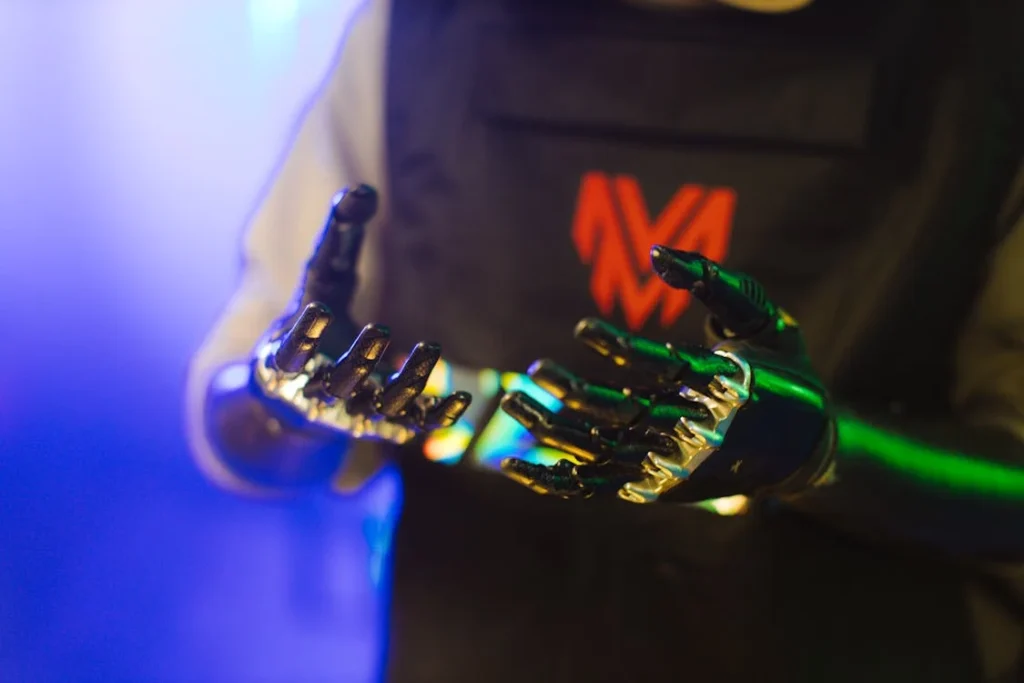Sports and physical activity are a vital part of life for many people, including those with upper limb amputations. With the right prosthetic, athletes can continue to perform at high levels, whether they are engaging in professional sports, fitness training, or recreational activities. Advances in prosthetic technology now offer specialized solutions that enhance performance, comfort, and durability, making it possible to compete and train without limitations.
Choosing the right upper limb prosthetic for an active lifestyle depends on several factors, including the type of sport, the level of amputation, and personal goals. Some athletes need prosthetics that provide a strong grip for weightlifting, while others require flexible designs that allow for smooth movement in sports like swimming or cycling. The key is finding a prosthetic that matches both the physical demands of the sport and the unique needs of the athlete.
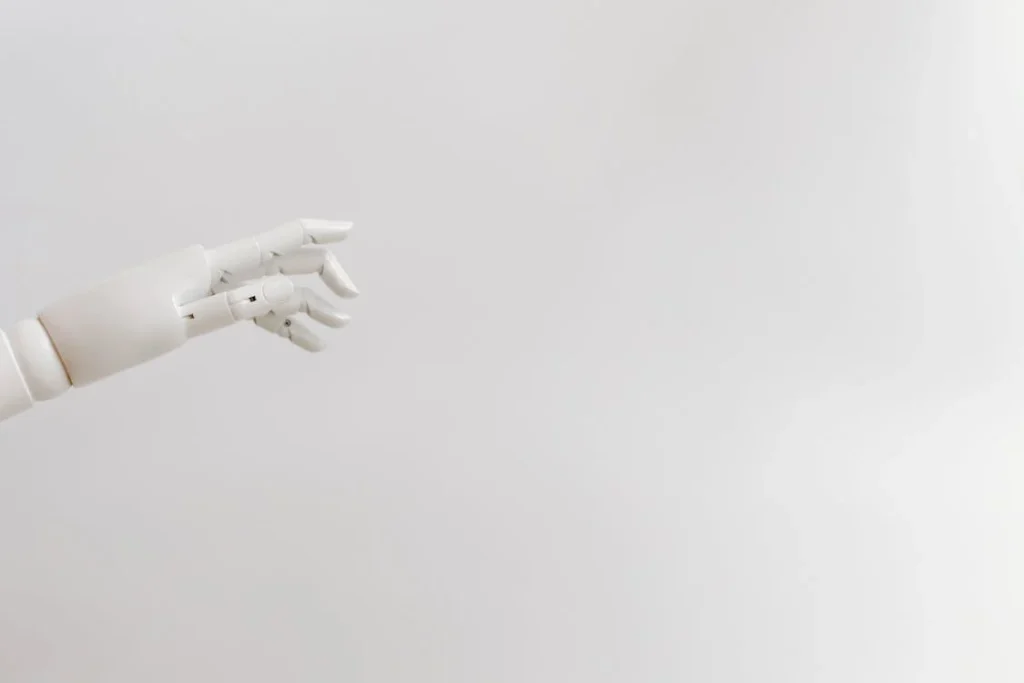
Choosing the Right Upper Limb Prosthetic for Sports
Finding the right prosthetic for athletic activities depends on several factors, including the type of sport, the range of motion required, and the level of amputation.
Not all prosthetics are designed for intense physical activity, so selecting a model that offers durability, flexibility, and stability is essential.
Understanding the Needs of Different Sports
Each sport places different demands on an athlete’s body, and a prosthetic should be designed to support those specific movements.
For example, a weightlifter needs a prosthetic that provides a firm grip and can handle heavy loads without slipping.
A swimmer, on the other hand, requires a lightweight, water-resistant prosthetic that allows for smooth arm movement without creating drag.
For running and cycling, athletes often need a prosthetic that offers balance and stability, ensuring that the missing limb does not affect their posture or performance.
Sports like rock climbing or gymnastics demand prosthetics with strong grip capabilities and the ability to handle body weight with precision.
Choosing a prosthetic that matches the physical demands of a sport ensures better performance and reduces the risk of injury.
Specialized designs, such as hook attachments for lifting weights or adaptive hands for gripping handlebars, allow athletes to train and compete at high levels without limitations.
The Role of Prosthetic Materials in Sports Performance
Materials play a crucial role in the functionality of a prosthetic, especially for athletes who engage in high-impact activities. Carbon fiber and titanium are popular choices because they are strong, lightweight, and resistant to wear and tear.
A heavy prosthetic can slow down movement and cause fatigue, making lightweight materials a preferred option for many sports.
In addition to strength and weight, flexibility is another key factor. Some sports require prosthetics with a degree of flexibility to allow for more natural movement.
For example, a sprinter may benefit from a prosthetic arm with a spring-like motion to assist with balance, while a tennis player might need a prosthetic that allows for wrist rotation to improve swing accuracy.
Advancements in 3D printing have made it possible to create custom prosthetics that fit an athlete’s specific needs.
By designing prosthetics with precise measurements, athletes can experience a more natural fit, reducing discomfort and improving control.
Robobionics integrates 3D printing technology to develop prosthetics that enhance both performance and comfort, ensuring that athletes can focus on their sport without distractions.
Grip Strength and Adaptive Attachments
For athletes in sports that require strong hand control, such as rowing, golf, or weightlifting, grip strength is a crucial consideration.
Prosthetics with interchangeable attachments allow users to switch between different grips depending on the activity.
Adaptive sports prosthetics come with specialized attachments, such as hooks for lifting weights, rubberized grips for holding tennis rackets, or paddle attachments for kayaking.
Myoelectric prosthetics, such as Grippy™ by Robobionics, use advanced sensors to detect muscle signals, allowing athletes to control grip strength with precision.
This technology provides a more natural feel and helps in activities that require fine motor skills, such as archery or basketball.
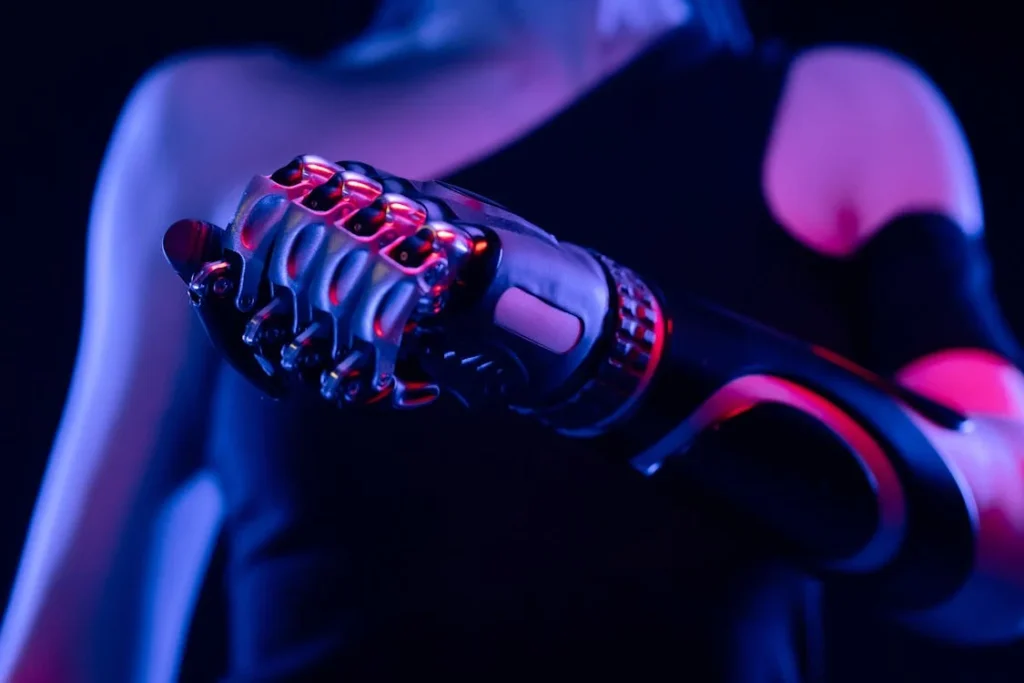
Enhancing Athletic Performance with Advanced Prosthetic Technology
Modern technology has transformed upper limb prosthetics, making them more adaptive and functional for athletes.
Innovations in myoelectric control, sensor-driven grip systems, and AI-powered movement tracking allow athletes to achieve greater precision and control in their sports.
These advancements enable better responsiveness, reducing the gap between natural movement and prosthetic-assisted performance.
The Impact of Myoelectric Prosthetics in Sports
Myoelectric prosthetics have changed the way athletes engage in sports by allowing for more natural and controlled movement.
Unlike body-powered prosthetics that require cables and harnesses, myoelectric devices use sensors placed on the residual limb to detect electrical signals from muscles.
These signals are translated into hand and arm movements, allowing the user to open, close, or rotate the prosthetic hand effortlessly.
For athletes who require precision, such as golfers, climbers, or martial artists, myoelectric prosthetics provide the ability to control grip strength and wrist rotation with minimal effort.
These devices also reduce muscle fatigue, as they do not require continuous mechanical effort to operate.
Some models come with adjustable grip settings, allowing users to switch between a firm grip for weight training and a gentle hold for delicate movements like catching a ball or handling sports equipment.
The Role of AI and Smart Sensors in Prosthetic Adaptation
Artificial intelligence is playing a major role in advancing prosthetic technology for athletes.
AI-powered prosthetics can learn from a user’s movement patterns and make real-time adjustments to improve efficiency.
This means that an athlete using a prosthetic arm for boxing or rowing can experience improved reaction speed and smoother transitions between movements.
Smart sensors are another breakthrough in prosthetic sports technology. These sensors detect force, pressure, and motion, allowing the prosthetic to respond to different levels of intensity.
For example, a prosthetic with grip sensors can automatically adjust its pressure when gripping a football, ensuring a secure hold without over-squeezing.
Some models also feature haptic feedback, which sends vibrations or sensory signals to the user, providing a sense of touch and improving coordination.
Waterproof and Sweat-Resistant Prosthetics for Endurance Sports
Athletes involved in endurance sports such as swimming, triathlons, or long-distance running require prosthetics that can withstand exposure to water and sweat.
Traditional prosthetics, particularly myoelectric devices, can be sensitive to moisture, which is why newer designs include waterproof coatings and sealed electronic components.
Robobionics incorporates water-resistant technology in select prosthetic models, ensuring that users can train in various environments without worrying about damage.
These prosthetics are designed with breathable, anti-slip materials that prevent sweat buildup, improving comfort during long workout sessions.
Athletes who engage in outdoor sports benefit from these enhancements, as they provide reliability in different weather conditions.
The Importance of Training and Adaptation
Even with advanced technology, using a sports prosthetic effectively requires training and adaptation.
Athletes must spend time developing muscle control, learning movement techniques, and adjusting to the weight and feel of their prosthetic.
Professional trainers and rehabilitation specialists help users refine their skills, improving coordination and reducing the risk of injury.
Training programs that incorporate gamified rehabilitation can also make the adaptation process smoother.
By using interactive exercises and virtual simulations, athletes can practice movements in a controlled environment before applying them to real-world sports scenarios.
Robobionics offers specialized rehabilitation support to help users maximize their prosthetic’s potential, ensuring that they can perform at their best in any sport.
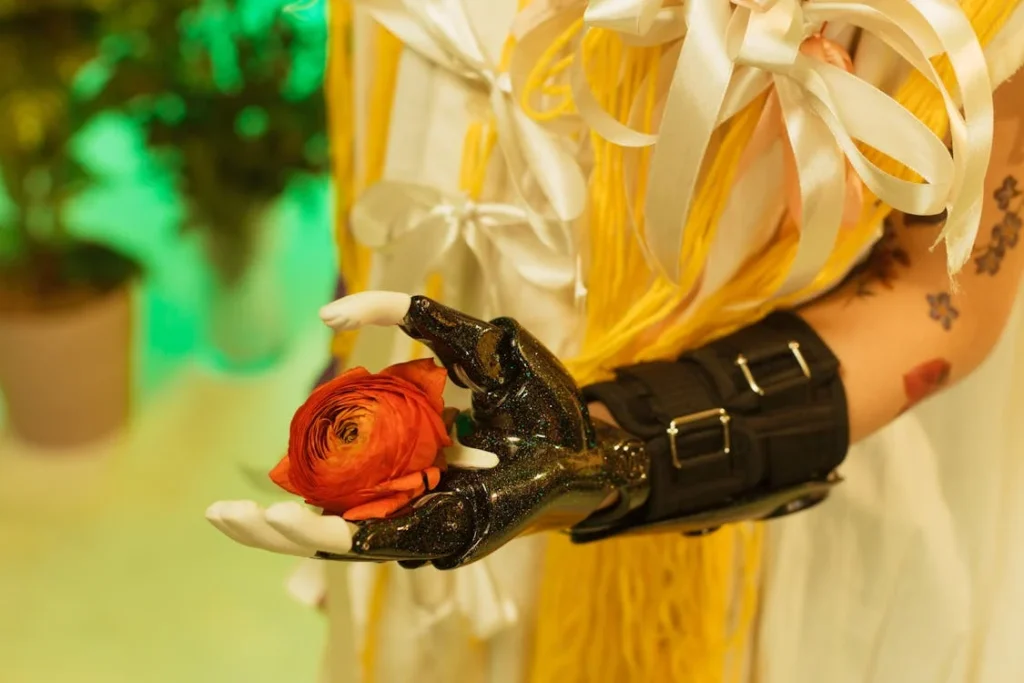
Sport-Specific Prosthetics: Customizing for Performance
Different sports require unique prosthetic adaptations to optimize movement, control, and comfort.
While some athletes benefit from general-use prosthetics, many sports demand specialized designs that cater to the mechanics of the activity.
By choosing a prosthetic tailored to their specific sport, athletes can enhance their performance and reduce the risk of strain or injury.
Prosthetics for Strength and Weight-Based Sports
Athletes involved in strength-based sports such as weightlifting, powerlifting, and CrossFit need prosthetics that provide maximum grip strength and load-bearing capacity.
Standard myoelectric prosthetics may not be ideal for heavy lifting, as they are designed for controlled movements rather than high-impact force.
Instead, specialized lifting attachments, such as reinforced hooks or grip-lock mechanisms, allow users to hold weights securely without excessive strain on their residual limb.
Prosthetics for weightlifting often include wrist-locking mechanisms to maintain stability during lifts.
This prevents excessive movement of the prosthetic during exercises like deadlifts or bench presses. The materials used must also be impact-resistant, ensuring that the prosthetic can withstand repeated high-force movements.
Some designs feature wrist rotation capabilities, allowing for greater flexibility during complex lifts.
Prosthetics for Running and Endurance Sports
Athletes who participate in running, marathons, or endurance sports need prosthetics that offer balance and energy efficiency.
While lower limb prosthetics are more commonly discussed in the running world, upper limb prosthetics also play a crucial role in maintaining posture, balance, and rhythm.
For long-distance runners, having a lightweight arm prosthetic can prevent muscular imbalances and improve overall efficiency.
Runners often prefer prosthetics with counterbalance weights to ensure proper arm swing and reduce fatigue. These prosthetics mimic the weight and motion of a natural limb, helping athletes maintain their speed and form.
Additionally, endurance athletes benefit from breathable materials that prevent excessive sweating and discomfort over extended periods of activity.
Cyclists also require prosthetic adaptations for improved handlebar grip and shock absorption. Some cycling-specific prosthetics include flexible wrist joints that allow for easier steering and quick adjustments while riding.
Grippy, rubberized prosthetic covers ensure a firm hold on handlebars, reducing the risk of slippage, especially in high-speed conditions.
Prosthetics for Ball Sports and Team Games
Athletes playing team sports such as basketball, football, baseball, and cricket require prosthetics that allow for quick hand-eye coordination and reactive movements.
Standard prosthetics may not provide the agility needed for gripping, catching, and throwing, so many athletes use specialized adaptive hands designed for ball sports.
In basketball and football, prosthetics with shock-absorbing materials help soften the impact when catching or passing a ball. Some prosthetics feature spring-loaded fingers that allow for better ball control and passing accuracy.
For goalkeepers or defenders, prosthetics with wider surface areas can assist in blocking shots or intercepting passes. Cricket and baseball players often use prosthetics with specialized glove attachments that provide a firm hold on bats.
These designs enable better swing mechanics, allowing for greater power and precision when hitting the ball.
The flexibility of wrist movement is also crucial for effective batting, making adjustable wrist joints a valuable feature in sports prosthetics.
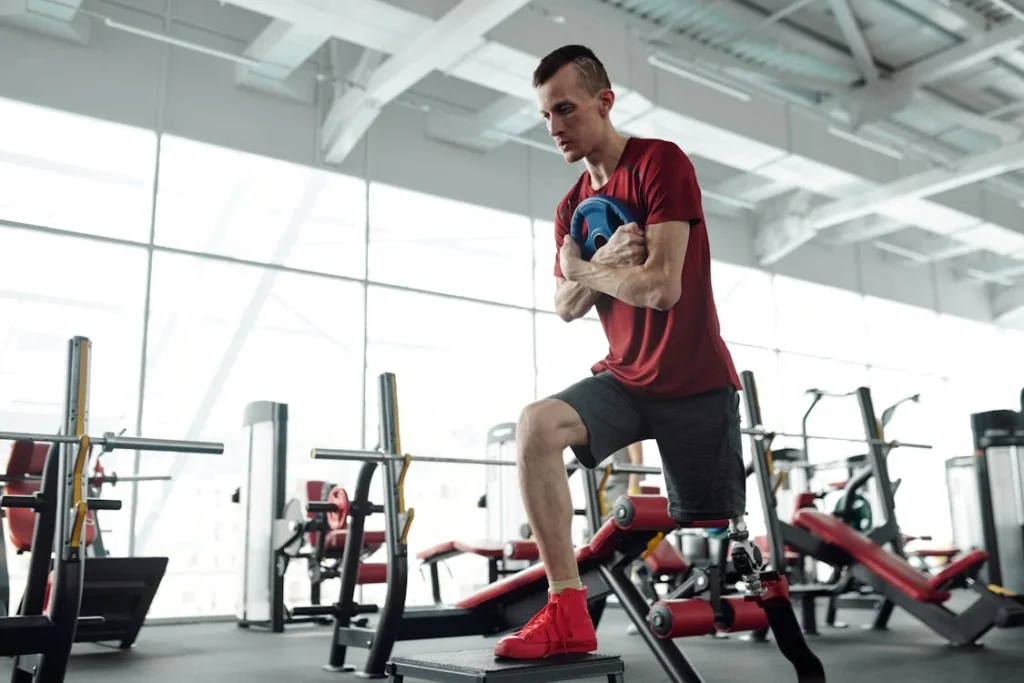
Training and Rehabilitation for Athletes Using Prosthetics
Using an upper limb prosthetic for sports requires more than just a high-quality device—it demands training, practice, and rehabilitation to maximize performance.
Athletes must develop strength, coordination, and confidence in their prosthetic, ensuring that it becomes a natural extension of their body. Proper training also helps prevent injuries and improves overall efficiency in movement.
Developing Strength and Endurance
For athletes new to using a prosthetic, strength training is essential. The residual limb must develop the muscle endurance needed to control the prosthetic effectively.
Even in sports that do not require upper body strength, building endurance in the supporting muscles can improve balance and stability.
Athletes often start with simple resistance exercises to activate and strengthen the muscles that will control the prosthetic. Over time, these exercises become more complex, incorporating full-body movements that mimic real sports actions.
For example, a swimmer may practice controlled shoulder rotations, while a weightlifter may work on grip stabilization drills. Endurance training is equally important, especially for athletes involved in long-duration sports such as running, rowing, or cycling.
Training sessions gradually increase in intensity, allowing athletes to adjust to prolonged prosthetic use without excessive fatigue.
Myoelectric prosthetic users focus on improving signal strength from their residual limb, ensuring smoother and more responsive movements.
Improving Coordination and Reaction Time
Sports require fast decision-making and quick reactions, making coordination a crucial skill for athletes using prosthetics. Unlike natural limbs, which respond instantly to nerve signals, prosthetics—especially mechanical ones—require deliberate control.
Training helps shorten reaction time, allowing athletes to perform fluid and instinctive movements. Many athletes use sport-specific drills to improve coordination. A basketball player, for example, might practice dribbling with their prosthetic hand to develop better control.
A tennis player could work on forehand and backhand swings, adjusting their grip strength for different shots. Repetitive drills help reinforce muscle memory, making movements more natural over time.
For myoelectric prosthetic users, coordination training focuses on refining muscle signals to improve accuracy. These athletes practice subtle muscle contractions, learning how to control grip intensity, wrist rotation, and finger movements with precision.
Some modern prosthetics come with adjustable sensitivity settings, allowing users to fine-tune their control as they progress.
Adapting to Different Sports Environments
Transitioning from training to real sports environments can be challenging, as factors like weather conditions, playing surfaces, and external pressure all affect performance.
Athletes must learn how their prosthetic responds in different scenarios, making adjustments as needed. For outdoor sports like cycling or running, athletes train on different terrains to ensure stability and adaptability.
Mountain bikers, for example, practice navigating uneven trails to improve grip control and balance. Similarly, swimmers train in different water conditions to adjust to varying resistance levels.
Athletes also practice under game-like conditions, simulating the intensity of a real match or competition. This type of training helps them get used to quick decision-making and unexpected movements, ensuring that they can rely on their prosthetic in high-pressure situations.
Psychological Resilience and Confidence Building
Beyond physical training, mental resilience is a key factor in sports performance. Adjusting to a prosthetic can be mentally challenging, especially for athletes who are competing at a high level.
Confidence in their prosthetic plays a major role in their ability to perform without hesitation. Coaches and rehabilitation specialists work closely with athletes to build confidence through gradual progression.
By setting small, achievable goals, athletes experience consistent improvement, reinforcing their trust in their prosthetic.
Support from fellow athletes, prosthetists, and sports trainers also helps create a positive mindset, motivating users to push past challenges.
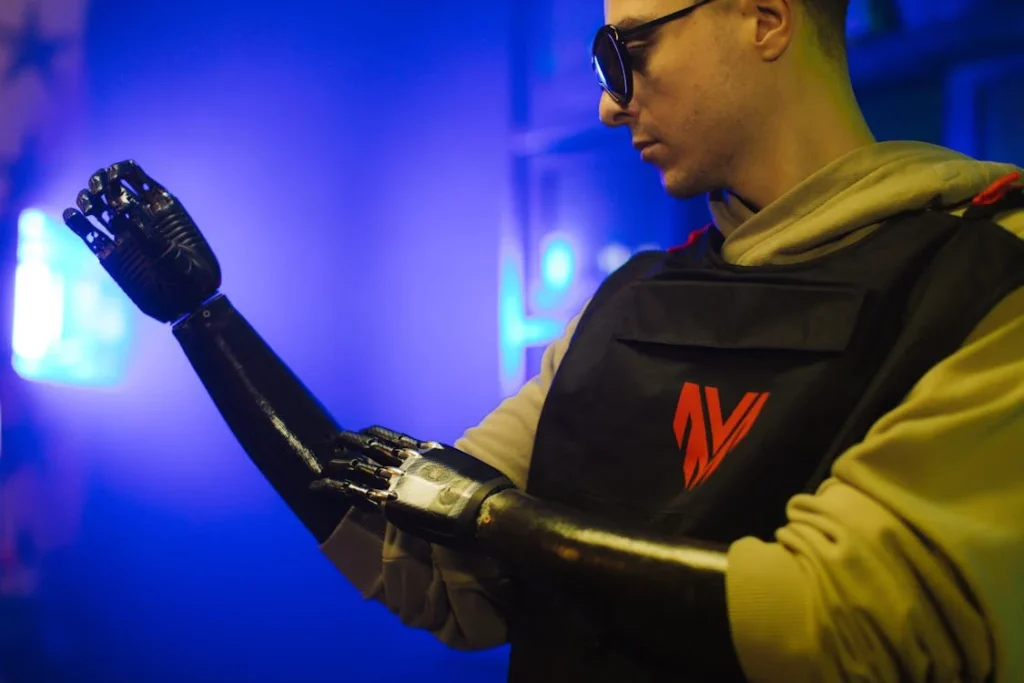
Overcoming Challenges in Competitive Sports with a Prosthetic
Competing in sports with an upper limb prosthetic comes with unique challenges. Athletes must adapt to different game rules, prosthetic limitations, and the mental pressure of competing at a high level.
Despite these obstacles, many athletes have excelled in their respective sports by developing techniques that maximize their prosthetic’s strengths while minimizing its limitations.
Adjusting to Sports Rules and Regulations
Many sports have specific rules regarding the use of prosthetics, particularly in competitive settings. Some governing bodies require prosthetic users to meet certain criteria to ensure fair competition.
Understanding these rules is crucial for athletes looking to compete professionally. In sports like weightlifting, athletes must ensure their prosthetic grip does not provide an unfair advantage.
In cycling, prosthetic users must maintain proper handlebar control to comply with safety regulations. Some sports leagues allow modifications to prosthetic devices, while others have strict limitations on design and functionality.
Para-athletic competitions provide a structured environment for athletes with disabilities, offering fair competition through classification systems.
These systems categorize athletes based on their level of limb loss and prosthetic function, ensuring that all competitors have a balanced playing field.
Managing Fatigue and Prosthetic Wear During Competitions
Unlike natural limbs, prosthetics do not provide biological feedback such as muscle fatigue or joint strain, which can make it difficult for athletes to judge their endurance.
This is especially important in endurance sports like marathons, triathlons, or long tennis matches, where maintaining performance over extended periods is critical.
To manage fatigue, athletes develop pacing strategies that balance performance with prosthetic energy efficiency. For example, long-distance runners train to distribute effort evenly throughout a race to prevent early exhaustion.
Cyclists learn to shift pressure between their prosthetic and natural arm to avoid muscle strain. Prosthetic maintenance is also a crucial part of competition preparation.
High-performance prosthetics experience significant wear and tear due to intense activity, requiring regular inspection before and after competitions.
Athletes often work with prosthetists to check for minor damage, adjust fit, and ensure that all moving parts function properly.
Adapting to Unexpected Situations During Play
Sports are unpredictable, and athletes must react to sudden changes in play. Quick reflexes, adaptability, and problem-solving skills help prosthetic users respond to challenges in real time.
Training under various conditions, such as different weather or playing surfaces, prepares athletes for unexpected scenarios. For example, a basketball player might need to adjust their shooting form if their prosthetic grip weakens due to sweat.
A rower must adapt to changing water conditions that affect the force needed for each stroke. Sprinters train for different starting positions to find the most effective way to launch off the blocks.
Prosthetic users also develop backup strategies in case of equipment failure. Carrying replacement parts, practicing alternative techniques, and having a support team ready for adjustments can help athletes stay in the game without major disruptions.
Pushing the Limits of Prosthetic Sports Performance
Despite the challenges, many athletes using upper limb prosthetics continue to break barriers in competitive sports.
Advances in prosthetic technology, combined with dedicated training and resilience, allow users to achieve feats once thought impossible.
Athletes at the highest levels push the limits of what their prosthetics can do, inspiring others to pursue sports without fear of limitations.
Through adaptive techniques, strategic training, and mental toughness, they prove that a prosthetic is not a limitation but an asset that enables them to reach their full potential.
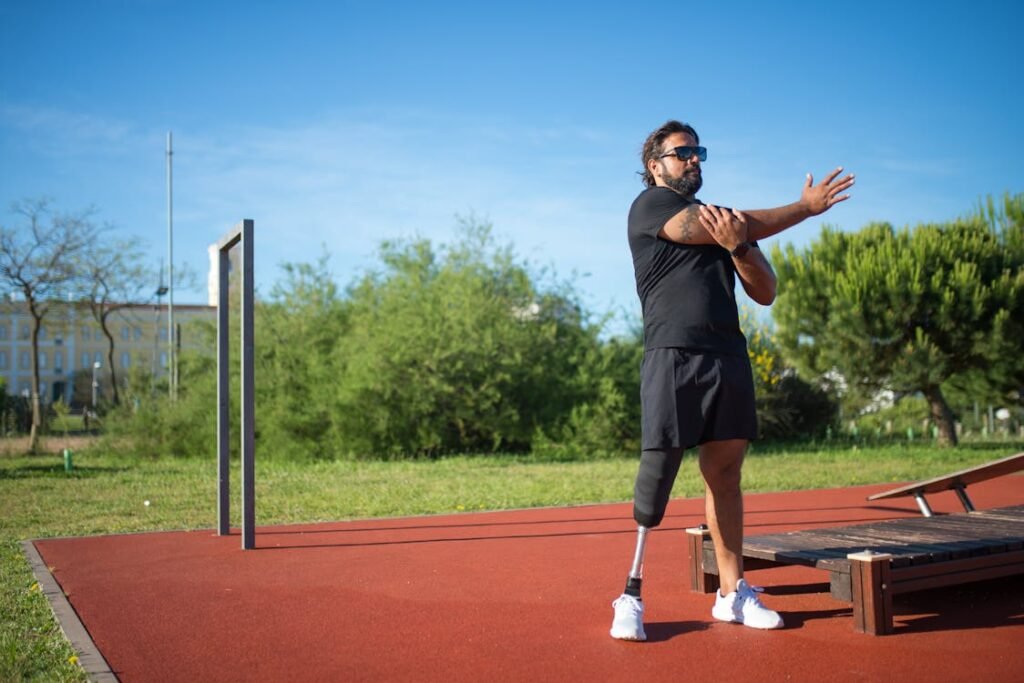
The Future of Upper Limb Prosthetics in Sports
Prosthetic technology continues to evolve, offering new possibilities for athletes with upper limb amputations.
As advancements in materials, artificial intelligence, and biomechanics improve prosthetic function, the gap between natural movement and prosthetic-assisted performance is narrowing.
These innovations are helping athletes push their limits and compete at higher levels.
Advancements in Lightweight and High-Performance Materials
One of the most significant improvements in sports prosthetics is the use of lightweight, durable materials. Traditional prosthetics were often bulky and heavy, making fast movements and endurance training difficult.
Modern prosthetics now incorporate carbon fiber, titanium, and advanced polymers, which reduce weight while maintaining strength. For athletes, a lighter prosthetic means less fatigue and greater ease of movement.
Runners, for example, benefit from arms with balanced weight distribution, allowing for more natural swinging motion. Climbers and weightlifters rely on reinforced materials that can handle high stress without breaking or wearing out quickly.
These advancements improve both performance and comfort, enabling longer training sessions and better results in competition.
Artificial Intelligence and Smart Prosthetics
AI-driven prosthetics are revolutionizing the way athletes control their movements.
With machine learning algorithms, these prosthetics can analyze an athlete’s movement patterns and adjust grip strength, wrist rotation, and joint stability automatically.
This adaptive technology makes prosthetics feel more natural, allowing for smoother and more responsive actions.
In sports where precision is crucial, such as archery, table tennis, or fencing, AI-powered prosthetics offer enhanced control by predicting movements and making micro-adjustments in real time.
This minimizes reaction delays and helps athletes refine their technique. Over time, these prosthetics “learn” from the user’s muscle signals, improving efficiency and reducing the need for conscious adjustments.
Some AI-driven prosthetics now feature voice or app-controlled settings, allowing athletes to switch between different grip modes and sensitivity levels depending on their sport.
For example, a prosthetic can shift from a firm grip for weightlifting to a flexible hold for playing badminton. These customizations enhance versatility and make prosthetics more adaptable to different activities.
Sensory Feedback and the Return of Touch
A major challenge for prosthetic athletes has been the lack of sensory feedback. Unlike natural limbs, most prosthetics do not provide a sense of touch, making it difficult to gauge grip pressure, ball control, or surface texture.
However, new developments in haptic feedback technology are addressing this issue. Prosthetics with sensory feedback systems use small vibrations, electrical signals, or pressure sensors to send information to the user’s nerves.
This allows athletes to “feel” the resistance of a ball, the tension of a grip, or the impact of a strike. In contact sports like boxing or martial arts, this feedback can improve reaction time and accuracy.
For sports that require delicate control, such as golf or rock climbing, sensory feedback helps athletes adjust their grip pressure more naturally.
By simulating real touch sensations, these prosthetics enable users to interact with their environment more effectively, leading to greater confidence and improved performance.
Personalized Prosthetics with 3D Printing
Customization is becoming a major focus in prosthetic sports technology, and 3D printing is playing a key role in this transformation.
Unlike traditional manufacturing methods, which can be costly and time-consuming, 3D printing allows for quick production of prosthetic parts tailored to an athlete’s specific needs.
With 3D scanning, prosthetic sockets can be designed to fit the user’s limb perfectly, eliminating discomfort and improving stability.
Athletes can also customize attachments for their prosthetic based on their sport. A cyclist may need a specialized handlebar grip, while a weightlifter may require an adaptive lifting hook.
By making prosthetics more personalized, 3D printing is helping athletes maximize their performance while keeping costs lower.
Conclusion
Upper limb prosthetics have transformed the way athletes train, compete, and push their physical limits. With advancements in lightweight materials, AI-driven control, sensory feedback, and 3D printing, prosthetic users can now participate in a wide range of sports without restrictions. Whether it’s weightlifting, cycling, swimming, or team sports, modern prosthetics offer the flexibility, durability, and precision needed for high-performance activities.
Beyond technology, success in sports with a prosthetic requires dedication, training, and confidence. Athletes must adapt their movements, refine their skills, and build strength to fully integrate their prosthetic into their performance. With proper rehabilitation and sport-specific adaptations, prosthetic users can compete at elite levels and achieve their goals.
Robobionics is committed to providing innovative prosthetic solutions that empower athletes to stay active and excel in their sport. Whether you need a high-tech myoelectric hand, a durable sports-specific attachment, or personalized training support, we are here to help. Book a consultation today and take the next step toward peak performance with a prosthetic designed for your active lifestyle.
A prosthetic is not just a replacement—it’s a tool for achieving greatness. With the right mindset and technology, anything is possible.



